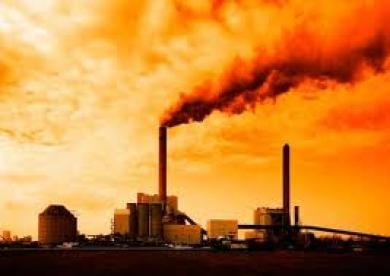As part of the Obama administration’s recent aggressive pursuit of greenhouse gas emissions reductions under President Obama’s Climate Action Plan, EPA is proposing to amend new source performance standards (NSPS) to include standards for reducing methane emissions for the oil and natural gas source category under the Clean Air Act. The proposal signed on August 18, 2015 would extend the final 2012 NSPS for crude oil and natural gas production to cover new and modified equipment in the transmission and distribution segments of the source category that had not been regulated by the 2012 rule. EPA carried this out pursuant to its authority under section 111(b)(1)(B) to review and, if appropriate, revise the final NSPS, “Standards of Performance for Crude Oil and Natural Gas Production, Transmission and Distribution” at 40 CFR Part 60, Subpart OOOO.
In 2012, EPA set NSPS standards for volatile organic compounds (VOCs) for certain emission sources for the oil and gas industry, but decided to set the source category standards for methane at a later date when it had better data on methane emissions from these sources. The 2012 VOC emission standards were finalized for a subset of new, reconstructed or modified equipment—fractured gas well completions, pneumatic controllers, centrifugal compressors, and reciprocating compressors, and equipment leaks at natural gas processing plants—primarily in the production segment of the oil and gas source category. EPA’s 2015 proposal would establish methane standards for this same subset of equipment by simply acknowledging that controls for VOC also control methane emissions. The 2015 proposed rule would also extend emission standards to equipment in the transmission and distribution segments of the source category that had not been regulated by the 2012 rule. Furthermore, EPA proposed amendments to the current NSPS that it contends will improve implementation of a number of aspects of the existing standards.
Because both VOCs and methane are hydrocarbon compounds they are both reduced by implementing the same emission control strategy. EPA has therefore proposed that the best system for emission reduction (BSER) for methane for relevant emission-producing equipment is the same as the 2012 BSER for VOCs for the currently regulated equipment. EPA then proposes to extend this BSER to previously unregulated equipment that EPA now believes are significant sources of VOC and methane.. In conducting its BSER analysis, EPA considers the following factors: the amount such pollutant is being emitted from the source category, the availability of technically feasible control options, and the costs of such control options.
While CAA section 111 requires EPA to consider cost, it does not provide any criteria for EPA’s consideration of cost in developing BSER. Caselaw provides some guidance, notably that costs cannot be “greater than the industry could bear to survive.” Portland Cement Ass’n v. EPA, 513 F.2d 506, 508 (D.C. Cir. 1975). Additionally, in Essex Chemical Corp. v. Ruckelshaus, 486 F.2d 427, 433 (D.C. Cir. 1973), the D.C. Circuit observed that for a BSER to be “adequately demonstrated,” the system must be “reasonably reliable, reasonably efficient, and . . . reasonably expected to serve the interests of pollution control without becoming exorbitantly costly in an economic or environmental way.” In its proposed 2015 rulemaking, EPA states that it would use a reasonableness standard to evaluate costs within the boundaries established by case law. One tool EPA will use is a cost-effectiveness analysis to determine whether a given control can achieve emission reduction standards at a reasonable cost. Comments from the industry sector on the cost of implementing the proposed BSER and its emission reduction effectiveness can help EPA more accurately assess the cost effectiveness of this proposal and may influence the BSER determination in the final rule.
VOC emission BSERs for equipment EPA has already regulated should provide some insight into the cost effectiveness of BSERs applied to unregulated oil and gas equipment that EPA proposes to regulate for the first time in this NSPS. In 2012, EPA determined BSER for wellhead facilities, pneumatic controllers, compressors, and storage vessels for VOCs. For wellhead facilities, EPA found that reduced emissions completion (REC), which became a popular practice among natural gas STAR production partners prior to the 2012 rulemaking, constitutes the BSER. Additionally, EPA determined no-bleed or, where necessary, low-bleed controllers constituted BSER for pneumatic controllers. EPA’s technical support document for the 2012 rulemaking demonstrated that controllers in the production segment of the source category are a major emission source, and therefore the cost of control for such emissions was reasonable. EPA must now determine if the pneumatic controllers in the segments regulated by the 2015 proposed rule have enough potential for emission reduction to make the cost of this same BSER reasonably cost effective for controllers used in a different part of the oil and gas sector. EPA also determined that it was cost effective for some equipment to capture and control 95% of VOC and methane emissions otherwise released. The proposed rule presumes that these controls will also be cost effective for equipment used in natural gas compression and distribution operations. Comments to challenge this presumption can be submitted within 60 days of publication of the proposed rule in the Federal Register. Otherwise, for currently unregulated equipment, EPA can be expected to finalize itsproposed regulations establishing similar BSERs for both methane and VOC emissions for equipment across the oil and natural gas transmission and distribution segments.




 i
i

